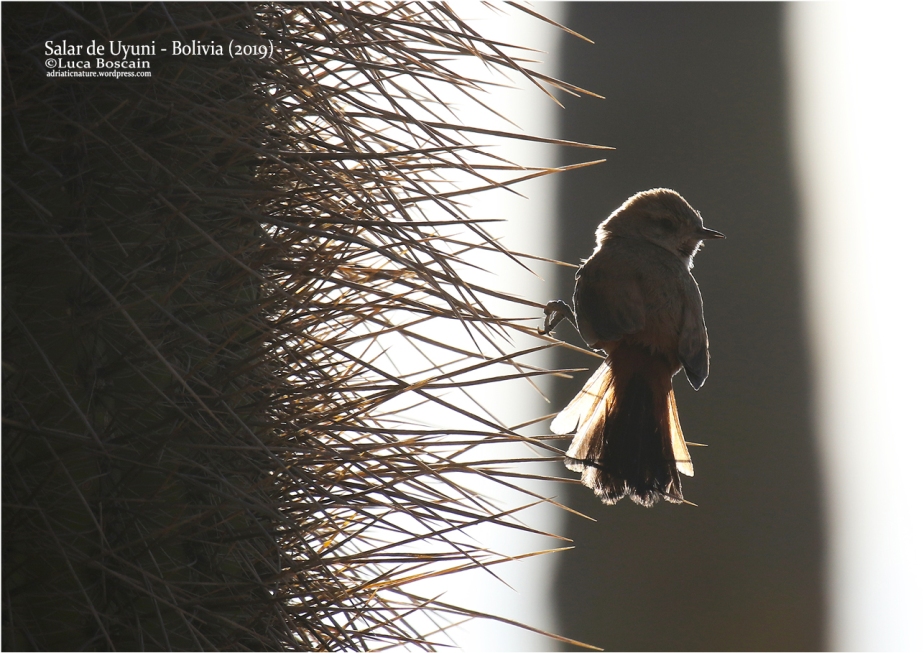To visit the largest salt flat in the World, the Salar de Uyuni, during the Austral spring, means to get the unmissable chance to see the cactus of the Andean desert in bloom, together with memorable deep blue skies and an amazing selection of Andean birdlife.
I’ve been once before, in 2012, around the Salar, described in the post “Into the wild of the E. Avaroa National Reserve and Salar de Uyuni (Bolivia)“, but since I found that area possibly the most extraordinary I’ve ever seen in my life, I decided to lead there my girlfriend as well, to see that unforgetable beauty.
The first time I started and ended my four-days tour in Tupiza, so I could see the town of Uyuni only on passage. This second time, in October 2019, we spent a full day in Uyuni and we began there a three-days tour to the Salar and to the Lagunas de colores.





The life in Uyuni, a dusty settlement in the middle of the barren high altitude desert of the Andes, used to depend from the mineral richness of the Altiplano: the Salar contains in fact large amounts of lithium, borax, sodium and other minerals. From my visit of 2012, the area seemed to have developed a much more florid tourism, with possibly hundreds of companies organizing tours and a fleet of dozens of Land Rovers and Toyotas leaving to the Salar each day.

The arrival of the mass tourism surely offered more working opportunities to the local indigenous population (mainly Quechua and Aymara), but on the other side made each tour less flexible about the timing of the visits and forced to establish more restricted rules.
Not rarely most of the cross-country vehicles arrived all together at the same time, making the visit like an invasion of locusts in usually deserted places…



Despite this, I had some more time than in 2012 to explore, having walks around the town in definitely not touristical quarters, like in the suburbs, where I looked for possible hot spot for the birdwatching.
Among the houses, there wasn’t too much in the truth, since there were almost no gardens or trees: the tiny Bare-faced Ground Dove (Metriopelia ceciliae), Spot-winged (Patagioenas maculosa) and Rock Pigeons, House Sparrows (Passer domesticus), Greenish (Sicalis olivascens) and Bright-rumped Yellow-Finches (Sicalis uropygialis).

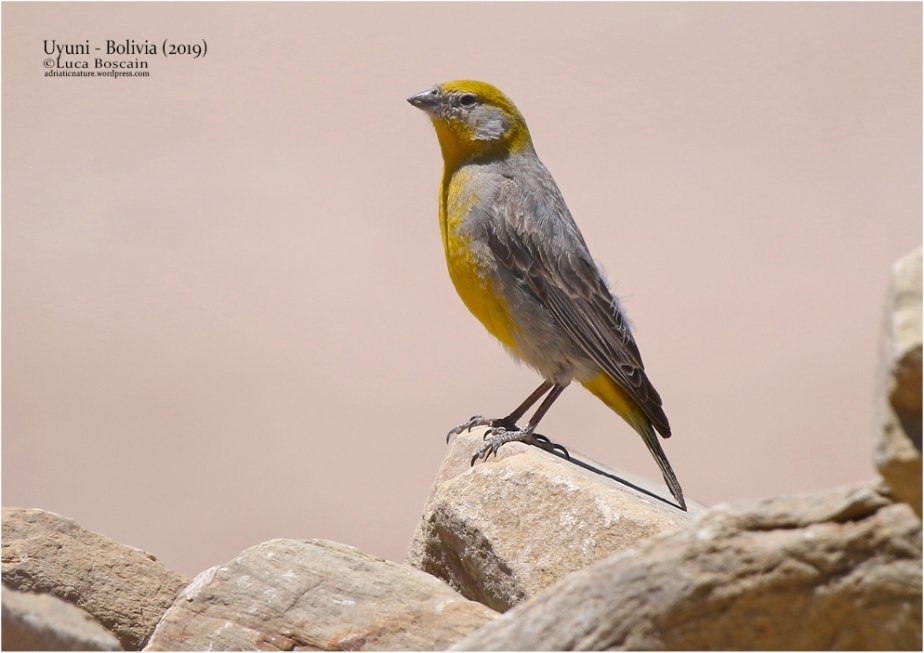
Being in a desert, what birds look for is first of all water, then the presence of some scattered plants. I found places in the suburbs of Uyuni that offered both, but also the disgraceful signs of human presence, including endless spreads of rubbish, blowed everywhere by the strong mountain winds.

If you don’t mind to much the stray dogs and the smell of garbage, there were some sewage pools south of the town, where I had few water birds like Puna Ibis (Plegadis ridgwayi) and Andean Gull (Chroicocephalus serranus), plus a far Mountain Caracara (Phalcoboenus megalopterus).

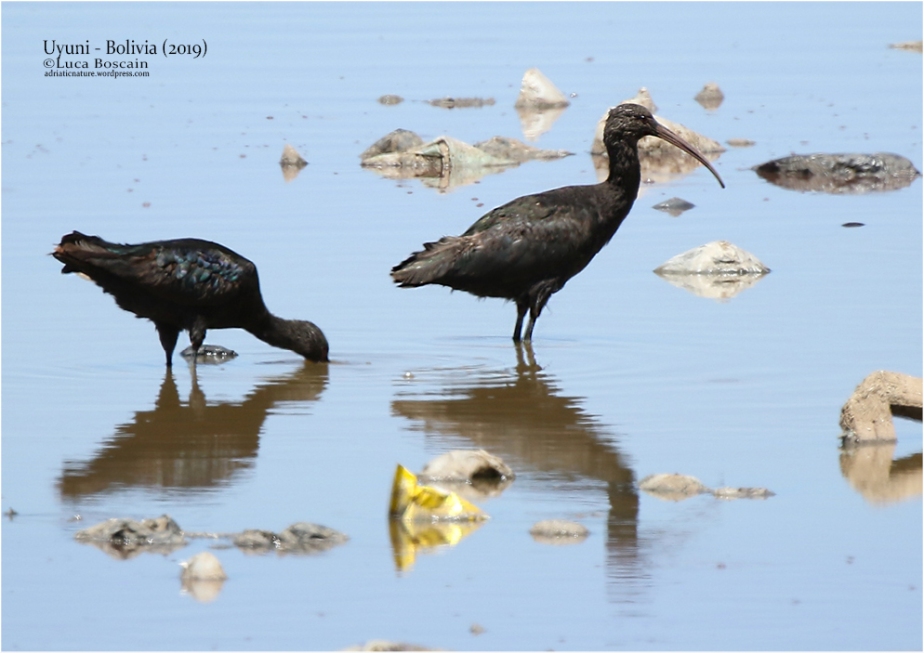
Another “hot spot” was the arid steppe north east of Uyuni: here a couple of lost of water alimented scattered pools that water a poor vegetation of grass, shrubs and Llaretilla (Pycnophyllum sp.) carpets that sustained good flocks of passerines, but also some larger birds.







The day after, the three-days tour we had booked left from Uyuni, heading to the nearby Cementerio de trenes, south of the sewage ponds: that’s a collection of derelict and rusty former locomotives and wagons, witness of the mine golden age.

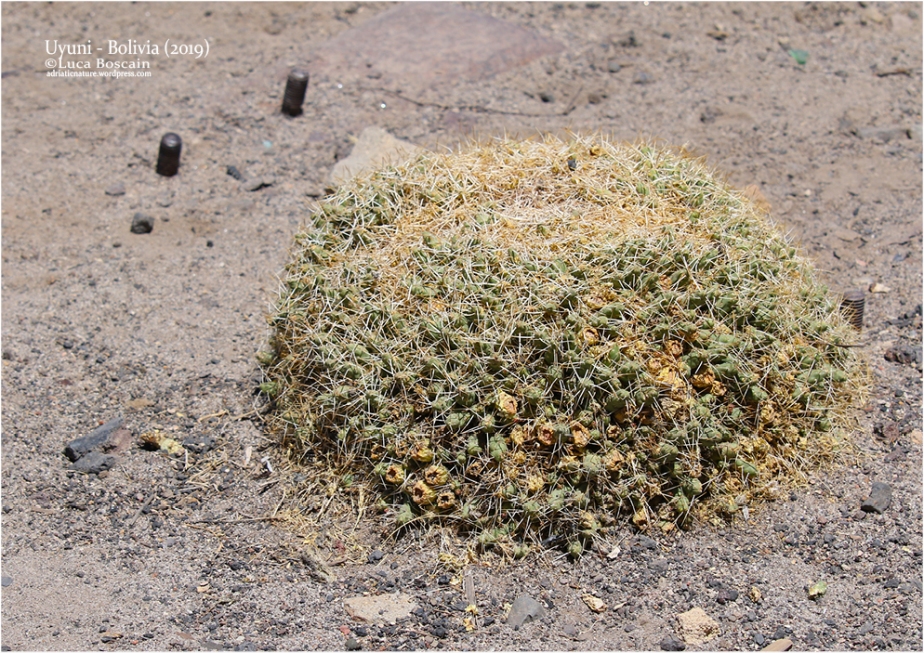
From there, we drove to the village of Colchani, on the edge of the Salar de Uyuni, seeing a herd of Vicuñas (Vicugna vicugna) along the way. The village lived on salt and tourism: from my visit of 2012, I noticed a lot of new stores selling Godzillas and dinosaurs to use in the Salar to take funny pictures. But there were still stacks of pure white salt and interesting salt bricks to build houses and the new “salt-made hotels” to host the crowds of tourists.

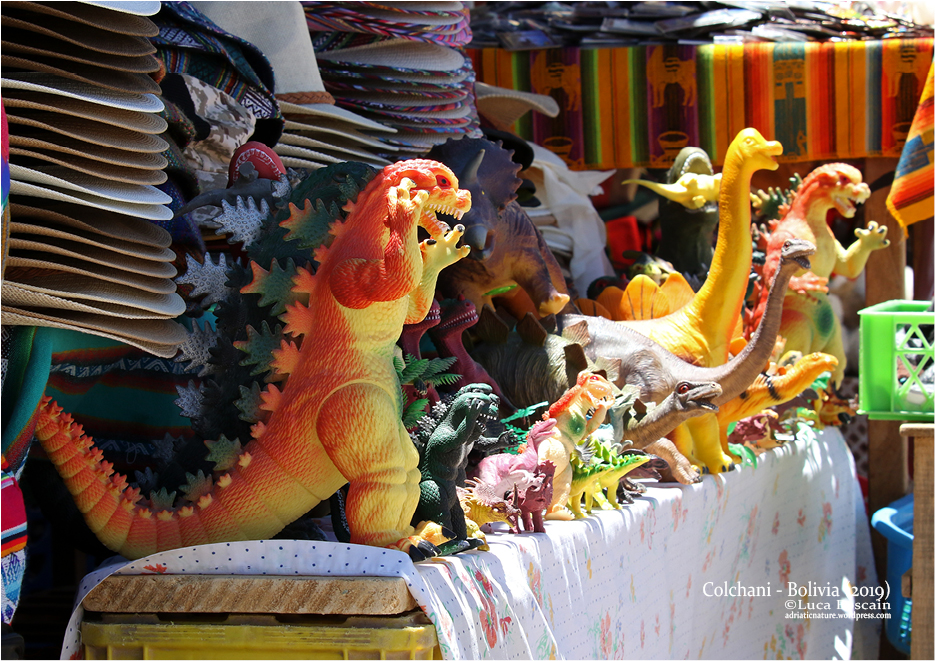




From Colchani began the desert of salt, with no plants or animals at all.
Particularly beautiful were some “cold springs” with water gushing from the salt flat in colouful pools and streams, the Ojos del Salar.

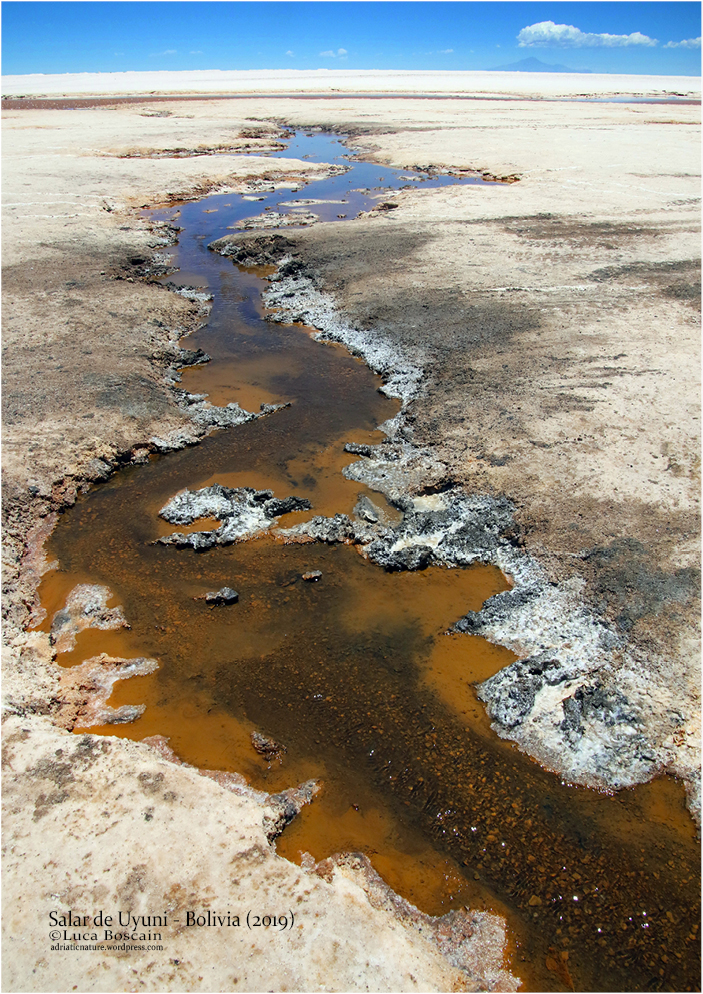

Then the track continued through the endless white flat.

After tens of kilometres, in the white flat emerged the dark shape of a mountain: an island in the white ocean, covered in cactus, Isla Incahuasi.
The “island” is just one of the many other that spread along the southern corner of the Salar, but apparently it is the only one visited by the tourists. If for the conservation of the fragile habitat, surely it was a good choice to reduce the pressure of the mass tourism, for our visit the place got a bit too crowded, expecially in comparison with 2012.
Despite this, the place was still thrilling, especially because we discovered soon that most of the cactus were in bloom: the tall Trichocereus atacamensis with large white flowers, while the much shorter Cumulopuntia boliviana with deep orange-yellow ones!

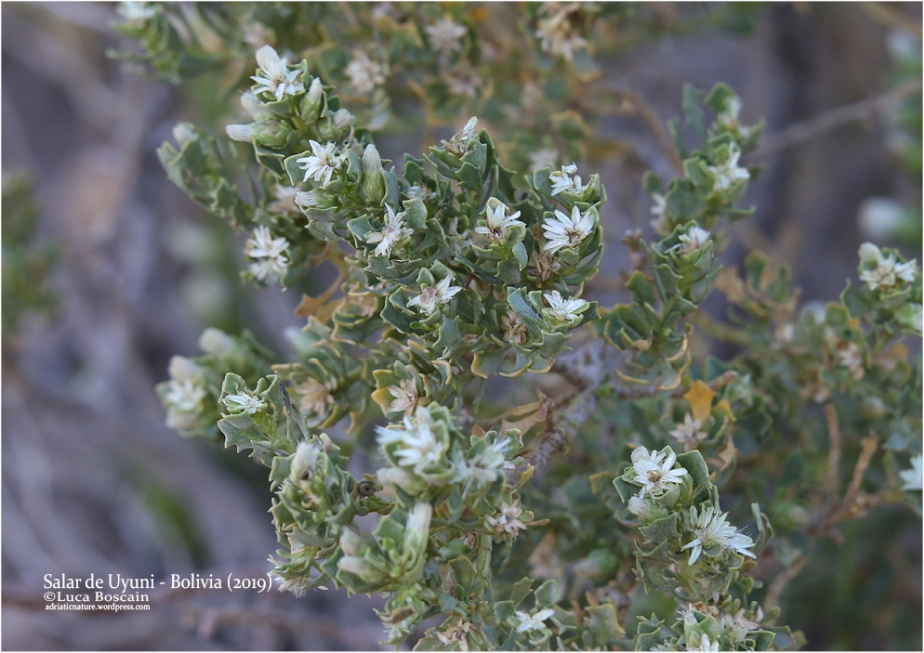


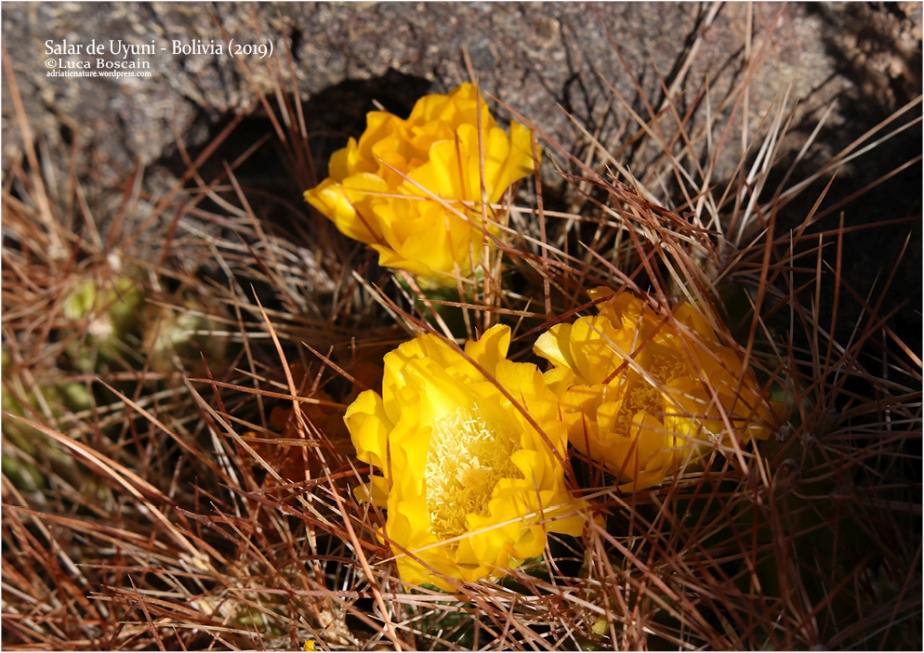

About the birds, I was expecting something different from the 2012, but I had right the same 3 species: Greenish Yellow-Finch, Black-hooded Sierra-finch (Phrygilus atriceps) and the pretty Dark-winged or Creamy-breasted Canastero (Asthenes dorbignyi), climbing easily the thorns of the cactus.
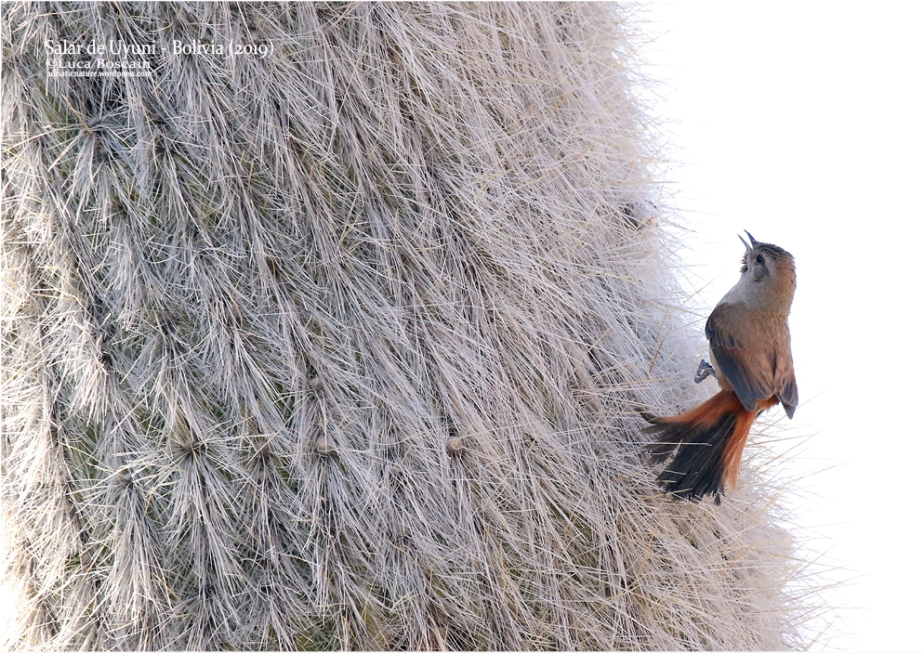
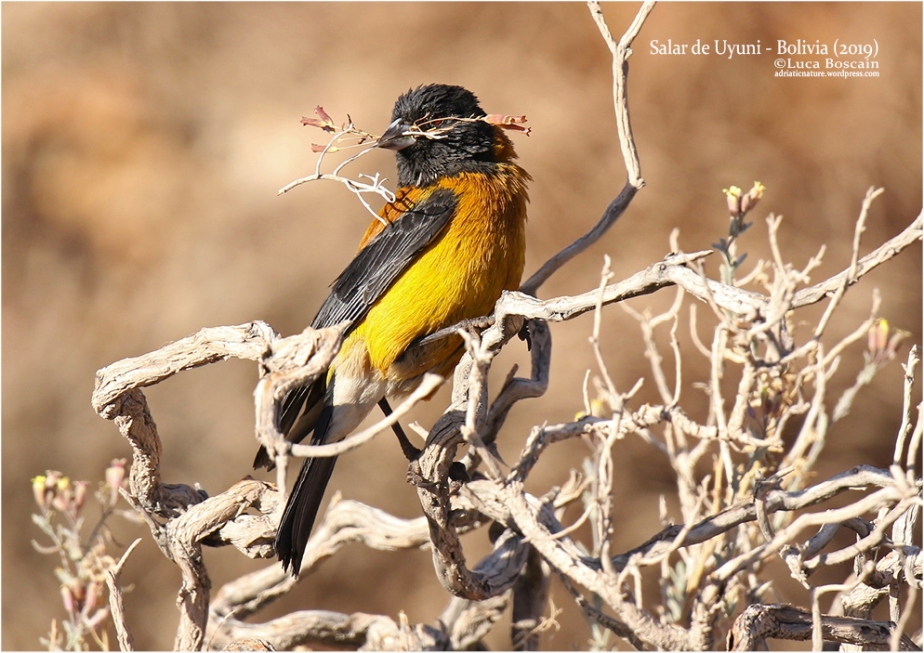



We spent the night in a beautiful new salt-made hotel in the village of Atulcha, the Nuevo Almanecer, on the southern edge of the Salar de Uyuni, and the day after I went outside early to look for birds. As usual, the first hours of the day are the best ones for birding, so I had about 10 species of birds: quite a lot to be in such an inhospitable habitat.



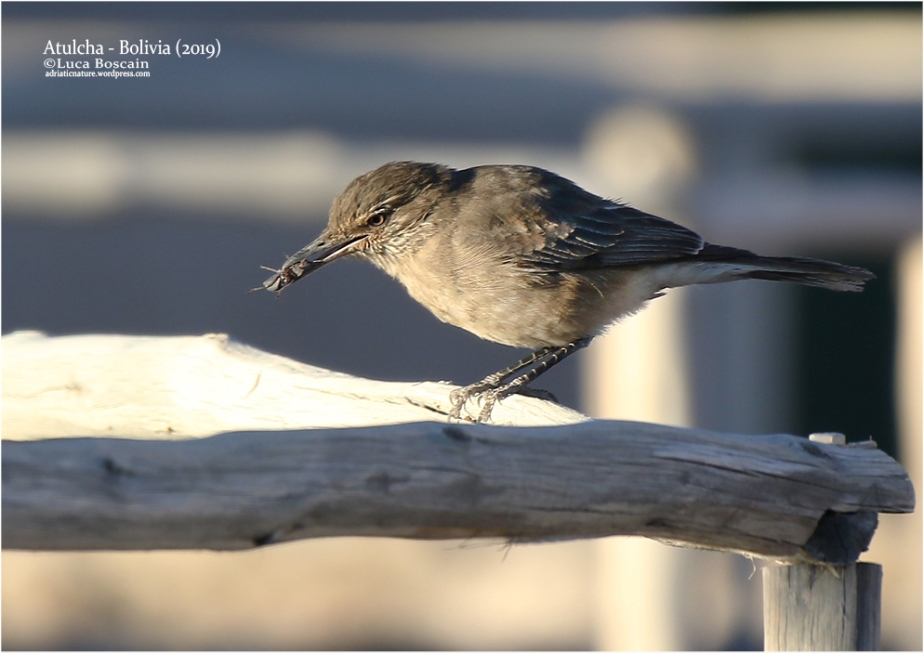

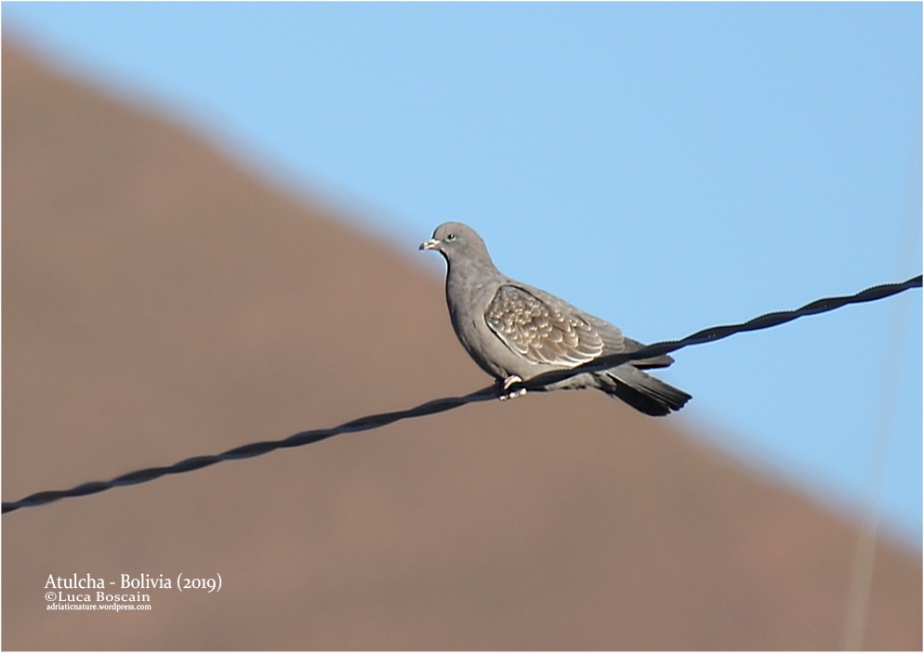





From Atulcha we went south along the Salar, siding lovely mountains covered by “forests” of cactus Trichocereus atacamensis, and then leaving finally the salt flat and penetrating in the desert, until we stopped in the dusty village of San Juan.
It’s the last proper settlement before the south-western Altiplano that lies at an altitude upper the 4,000 m and we could find there the last little store where to buy drinks and sweets.
About the birding, walking around I spotted 6 species: Andean Gull, Golden-spotted Ground Dove, Spot-winged Pigeon, Rufous-collared Sparrow, Greenish Yellow-Finch and Black-hooded Sierra-Finch.
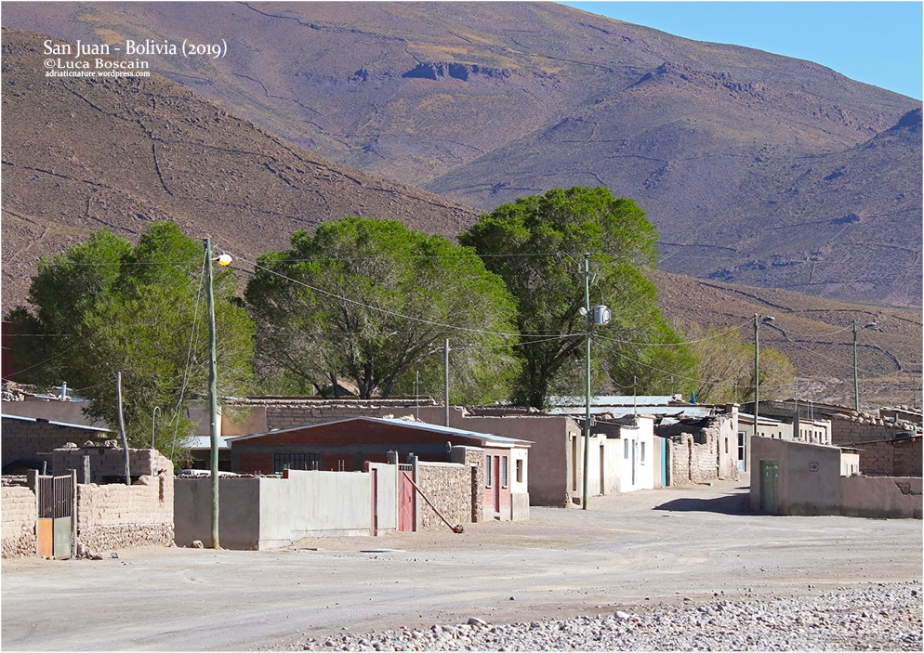



The pursuance of the three-days trip will follow in another post, showing the stunning beauties of the —> Reserva nacional de fauna andina Eduardo Avaroa and its Lagunas de colores.
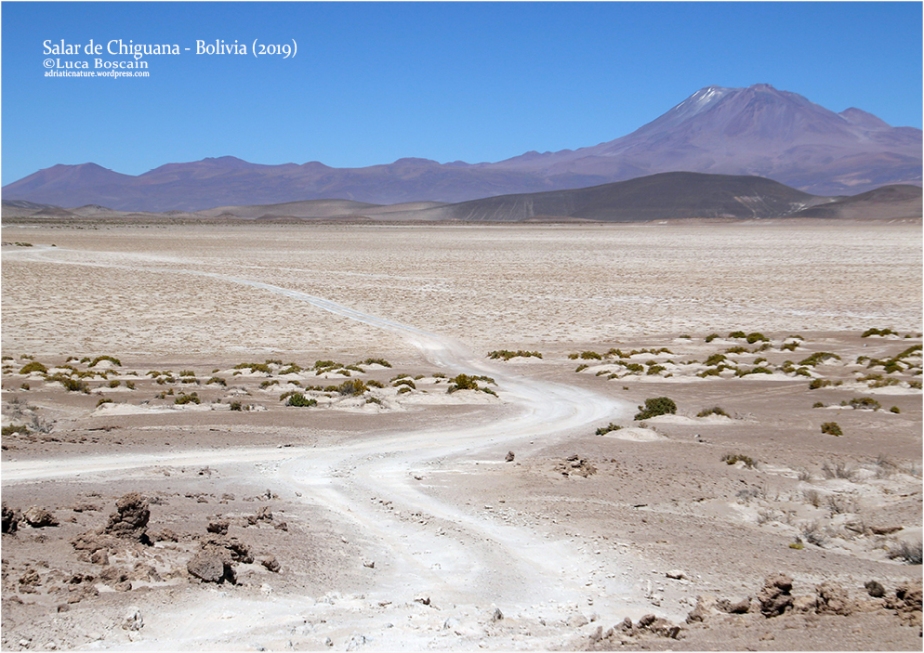
CHECK LIST of the SPECIES noticed during our trip nearby Uyuni (U), Colchani (C), Isla Incahuasi (I), Atulcha (A) and San Juan (S)
Mammals
- Vicuña (Vicugna vicugna) – U, C, A
- Southern Mountain Viscacha (Lagidium viscacia) – A
Birds
- Puna Ibis (Plegadis ridgwayi) – U
- Mountain Caracara (Phalcoboenus megalopterus) – U
- Andean Gull (Chroicocephalus serranus) – U, S
- Rock Pigeon (Columba livia var. domestica) – U
- Spot-winged Pigeon (Patagioenas maculosa albipennis) – U, A, S
- Bare-faced Ground Dove (Metriopelia ceciliae zimmeri) – U
- Golden-spotted Ground Dove (Metriopelia aymara) – A, S
- Black-winged Ground Dove (Metriopelia melanoptera) – A
- Burrowing Owl (Athene cunicularia juninensis) – U
- Puna Miner (Geositta punensis) – U
- Dark-winged/Rusty-vented/Creamy-breasted Canastero (Asthenes dorbignyi) – I, A
- Black-billed Shrike-Tyrant (Agriornis montanus) – A
- Brown-backed Mockingbird (Mimus dorsalis) – A
- Bright-rumped Yellow-Finch (Sicalis uropigyalis) – U, C
- Greenish Yellow-Finch (Sicalis olivascens) – U, I, A, S
- Black-hooded Sierra-Finch (Phrygilus atriceps) – I, A, S
- Mourning Sierra-Finch (Rhopospina fruticeti coracina) – A
- Ash-breasted Sierra-Finch (Geospizopsis plebejus) – U, A
- Rufous-collared Sparrow (Zonotrichia capensis pulacayensis) – A, S
- House Sparrow (Passer domesticus) – U
Plants
- Maihueniopsis molfinoi – U
- Cumulopuntia boliviana – I, A
- Trichocereus atacamensis – I, A
- Pycnophyllum sp. – U
- Solanum sp. – A
- Parastrephia cfr. quadrangularis – U
- Baccharis sp. – I?, A
- Asteraceae sp. – I, A
Luca Boscain

